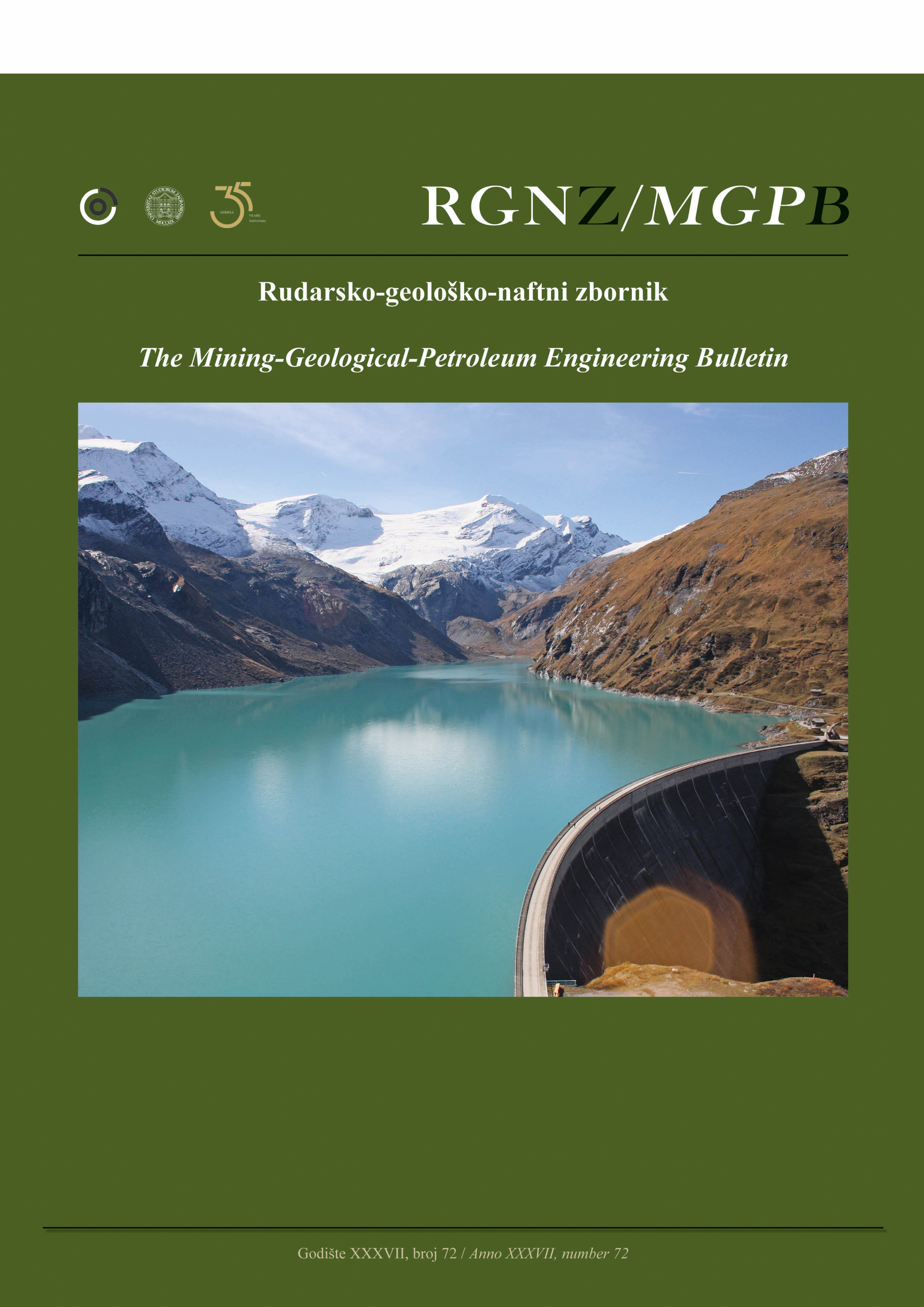The development of the numerical method for simulation of metal material quenching
DOI:
https://doi.org/10.17794/rgn.2025.1.3Keywords:
Stefan problem, two-fluid VOF model, immersion quenching, boiling flow, heat transferAbstract
Quenching is a general term for the rapid cooling of an austenitized hardenable steel or a solution treated aluminum alloy in liquid mediums with a boiling point lower than austenitization or annealing temperature. In this paper, an approach in development of a novel numerical method for computation of quenching of metal materials by immersion in liquids subjected to the Leidenfrost phenomenon has been described. Upon the known initial temperatures of the quenchant and the specimen, the numerical method by application of two-fluid VOF model solves the Stefan problem and the temperature distribution within the specimen in the first stage of quenching, in which the surface of the specimen is covered with the vapour film. The validation of the solution by comparison of the estimated temperature distribution with the experimental results from literature has been carried out, and the instantaneous distribution of the heat flow rate has been analyzed. The obtained results show the suitability of the suggested method for the numerical analysis of the initial phase of metal material immersion quenching.
Downloads
Published
Issue
Section
License
Copyright (c) 2024 Alen Cukrov, Darko Landek, Yohei Sato , Ivanka Boras, Bojan Ničeno

This work is licensed under a Creative Commons Attribution 4.0 International License.
Creative Commons-BY
Authors who publish with this journal agree to the following terms:
In agreeing this form, you certify that:
- You read the ethical codex of the RGN zbornik available at journal web.
- You submitted work is your original work, and has not previously been published and does not include any form of plagiarism.
- You own copyright in the submitted work, and are therefore permitted to assign the licence to publish to RGN zbornik.
- Your submitted work contains no violation of any existing copyright or other third party right or any material of an obscene, libellous or otherwise unlawful nature.
- You have obtained permission for and acknowledged the source of any illustrations, diagrams or other material included in the work of which you are not the copyright owner.
- You have taken due care to ensure the accuracy of the work, and that, to the best of your knowledge, there are no false statements made within it.
- All co-authors of this submitted work are aware of, and in agreement with, the terms of this licence and that the submitted manuscript has been approved by these authors.
Publication licence
You retain copyright in your submitted work, according to journal license policy (CC-BY). By signing this form you agree that RGN zbornik may publish it under the publication licence. In summary the licence allows the following:
Anyone is free:
- To copy, distribute, display, and perform the work.
- To make derivative works.
Under the following conditions:
- The original author must always be given credit.
- The work may not be used for commercial purposes.
- If the work is altered, transformed, or built upon, the resulting work may only be distributed under a licence identical to this one.
Exceptions to the licence
In addition to publishing the work printed under the above licence, RGN zbornik will also enable the work to be visible online.
The journal editorial can change the licence rules anytime but it cannot retroactively restrict author(s) rights.


